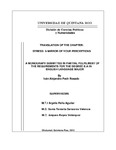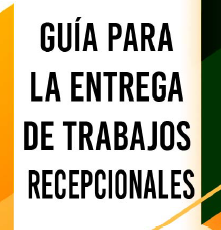Mostrar el registro sencillo del ítem
Translation of the chapter: stress: a mirror of your perceptions.
| dc.contributor.author | Pech Rosado, Ivan Alejandro | |
| dc.contributor.other | Sansores Valencia, Sonia Teresita | |
| dc.contributor.other | Reyes Velazquez, Amparo | |
| dc.date.accessioned | 2023-11-27T19:46:13Z | |
| dc.date.available | 2023-11-27T19:46:13Z | |
| dc.date.issued | 2012-11 | |
| dc.identifier.uri | http://hdl.handle.net/20.500.12249/3757 | |
| dc.description.abstract | The ancient art of translation has taken part in the human race throughout history due to the need of communication among alien cultures. Through translation people can know different civilizations, learn about different life styles, adopt new philosophies or approaches or they can simply watch a dubbed or subtitled blockbuster or read a best seller in their own language. Although for most people the work of translators can go unnoticed, the truth is that their work is very necessary in our globalized world. Many people have the preconceived idea that translation is an easy task, but in reality literate people know that the act of translating entails a great deal of hard work and responsibility. In order to carry out a good rendering, the translator has to master both the source and the target language. Specific skills and techniques are needed. Translating is not only to transfer the same exact meaning from the source language, but also having an adequate style and register is required. As mentioned before, many people think that translation is an uncomplicated task, most of them think that in order to render a text, the translator only needs to sit down, and start translating with the help of a couple of dictionaries. Some others even think that we, translators, can make use of a software or translator machines to do our job. That is not far from reality, but what they do not take into account is that when talking about finding an exact word to achieve the desired effect, machines cannot do that. The mere idea is so naïve. It goes without saying that only a thinking individual can do that. Only a good translator can think in the best way to arrange words in a sentence to make it more understandable and effective. | |
| dc.description.provenance | Submitted by Guadalupe Castillo Villanueva (castillogm@uqroo.edu.mx) on 2023-11-27T19:45:00Z No. of bitstreams: 1 PE1128.P42.2012-67865.pdf: 2703120 bytes, checksum: b167cb756dc69c65a7f0029cc76770bc (MD5) | |
| dc.description.provenance | Approved for entry into archive by Guadalupe Castillo Villanueva (castillogm@uqroo.edu.mx) on 2023-11-27T19:46:13Z (GMT) No. of bitstreams: 1 PE1128.P42.2012-67865.pdf: 2703120 bytes, checksum: b167cb756dc69c65a7f0029cc76770bc (MD5) | |
| dc.description.provenance | Made available in DSpace on 2023-11-27T19:46:13Z (GMT). No. of bitstreams: 1 PE1128.P42.2012-67865.pdf: 2703120 bytes, checksum: b167cb756dc69c65a7f0029cc76770bc (MD5) Previous issue date: 2012-11 | |
| dc.format | ||
| dc.language.iso | eng | |
| dc.publisher | Universidad de Quintana Roo | |
| dc.rights.uri | http://creativecommons.org/licenses/by-nc-nd/4.0 | |
| dc.subject | Inglés -- Estudio y enseñanza | |
| dc.subject.classification | HUMANIDADES Y CIENCIAS DE LA CONDUCTA::LINGÜÍSTICA::LINGÜÍSTICA APLICADA::TRADUCCIÓN | |
| dc.title | Translation of the chapter: stress: a mirror of your perceptions. | |
| dc.type | Trabajo de grado, licenciatura | |
| dc.type.conacyt | bachelorThesis | |
| dc.rights.acces | openAccess | |
| dc.identificator | 4||57||5701||570112 | |
| dc.audience | generalPublic | |
| dc.division | Campus Chetumal Bahía | |
| dc.division.sub | División de Humanidades y Lenguas | |
| dc.division.programa | Lengua Inglesa |
Ficheros en el ítem
Este ítem aparece en la(s) siguiente(s) colección(ones)
-
Licenciatura [2590]






